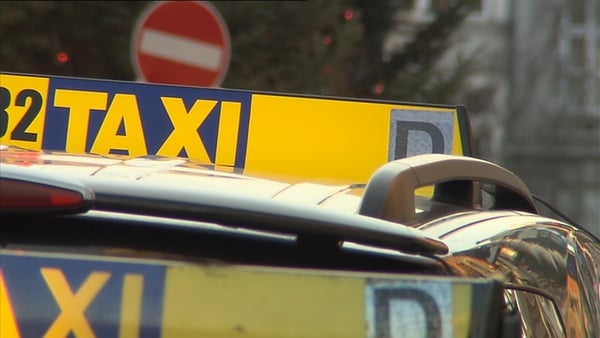Cast your mind back to the start of the pandemic and the focus was all about getting equipment for life support.
Amid huge demand, ventilators were in short supply globally and were critically needed to keep the sickest patients with Covid alive.
In the business world here though, life support of a different kind was also needed, as firms whose turnover had collapsed needed an urgent injection of cash to survive and maintain their staffing.
The Temporary Wages Subsidy Scheme (TWSS) and its later successor, the Employment Wage Subsidy Scheme (EWSS), were quickly introduced as a vital mechanism for keeping the relationship between businesses that were vulnerable but viable, and their staff, intact.
Without the schemes, hundreds of thousands of additional workers would have been laid off and would have had to join the hundreds of thousands more who were in receipt of the Pandemic Unemployment Payment (PUP).
By providing a wage subsidy, connections between tens of thousands of employers and their employees weren't broken, leaving them better placed for the recovery when it eventually began.
In total, over the 16 months of its existence, the EWSS has been drawn down by 51,500 employers and used to pay a total of 670,800 employees.
During the last full month of September, 27,200 businesses were still using the scheme, with 309,900 workers benefiting.
The cost of the scheme has been massive though. €5.087bn has been the bill to date, plus a further €804m in PRSI foregone.
And given that is borrowed cash, clearly it cannot continue indefinitely.

So the Government outlined in Tuesday’s Budget when and how the EWSS would be retired, in a gradual manner that avoids a so-called cliff-edge.
The scheme will be extended until the end of April and will continue at current rates for October and November, but will be reduced to a two rate structure through December, January and February.
In March and April it will be reduced further to a flat rate subsidy of €100 and no new entrants will be able to join after 1 January.
The estimated cost of the extension from November to the end of April is in the region of €1.26bn.
The structure provides a clear and certain glidepath for the EWSS, providing employers with visibility of what is coming.
But nonetheless, that is unlikely to make the disappearance of the scheme for many firms or their staff any easier.
According to a jobseekers forecast analysis by the Department of Public Expenditure and Reform that was completed for and published as part of Budget 2022, as many as 220,000 employees on average will continue to be supported by the EWSS until it ceases in April.
That’s a lot of staff who, if the recovery doesn’t go well between now and then for their employer, could potentially find themselves out of work in the Spring when the plug is pulled.
The Department's analysis is not unequivocal about the implications - nor can it be.
"The LR [Live Register] implications for the closure of EWSS are uncertain, as these implications will be contingent upon the overall financial state of the enterprise base which is unknown," it states.
But nonetheless it does project that even if a quarter of those 220,000 staff were to lose their jobs and ended up on the Live Register (remember the PUP disappears in February), the additional cost to the welfare budget would be €385m if they remained on it until the end of 2022.
If the number were to be as many as half, the associated cost would be €771m.

The author, Niall Hickey, does acknowledge that this illustration is simplistic as it seems unlikely this number of EWSS employees would move to the Live Register at the closure of the scheme, particularly all at once.
"Additionally, the assumption that this population would remain on the LR, and would no benefit from the projected improvement in the labour market in 2022, seems unlikely," he writes.
Nonetheless, it does serve to illustrate the huge potential impact the wind down of the EWSS could have on the workers whose jobs depend on it.
The analysis does not, however, stretch to consider the impact on the firms themselves.
But there is a widespread fear among politicians, officials, economists and business leaders, that the end of the EWSS and a parallel reduction in creditor forbearance as the economy recovers, could spell the end for many businesses too.
So far, the level of business failures arising during the pandemic has been remarkably low.
On Monday, Deloitte reported that a 36% decrease in corporate insolvencies for the year to date, when compared to the same period in 2020.
However, there are tentative signs that trend might be changing, with Deloitte finding that during the third quarter of the year, the number of insolvencies rose 88% to 109 when compared to the second quarter.
"While there was a significant increase in insolvency activity between Q2 and Q3, it is evident that the full effect of Covid-19 restrictions on the Irish economy has still yet to materialise in terms of the total number of corporate insolvencies," the consultancy said.
"With the anticipated removal of government supports after the year-end and beyond, the first half of 2022 might begin to reveal the true economic impact on the SME sector, " according to Deloitte.
The latest Revenue figures on EWSS recipients provide some insight into where the storm might be worst.
Not surprising, 19% of all employers availing of the EWSS are in the accommodation and food services sector, followed by 14% in wholesale and retail trade and 11% in construction.
But when you look at the figures for employees that are dependent on the EWSS, 35% of them are in accommodation and food services.
Geographically, outside of the roughly one third of employers and employees who are based in Dublin, the rest are well spread across the country.
In other words, when the EWSS ends, every county could potentially feel the impact.
It’s all further food for thought as the Government prepares to make a decision on whether to lift restrictions completely or not on Friday.
Businesses that are able to trade normally over the coming months will have a better fighting chance when the EWSS is removed next April.
But if they are operating with one hand tied behind their backs for additional weeks or months, they will remain weakened and perhaps less ready to stand on their own two feet.
Difficult choices lie ahead for many.






